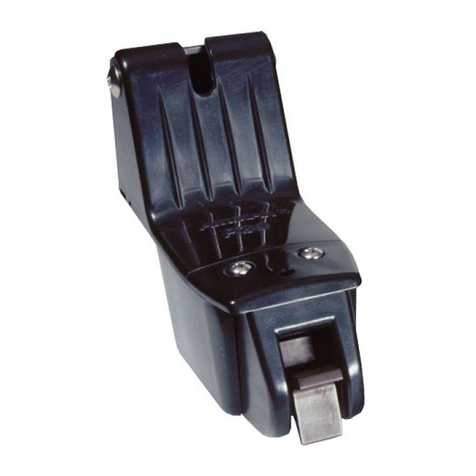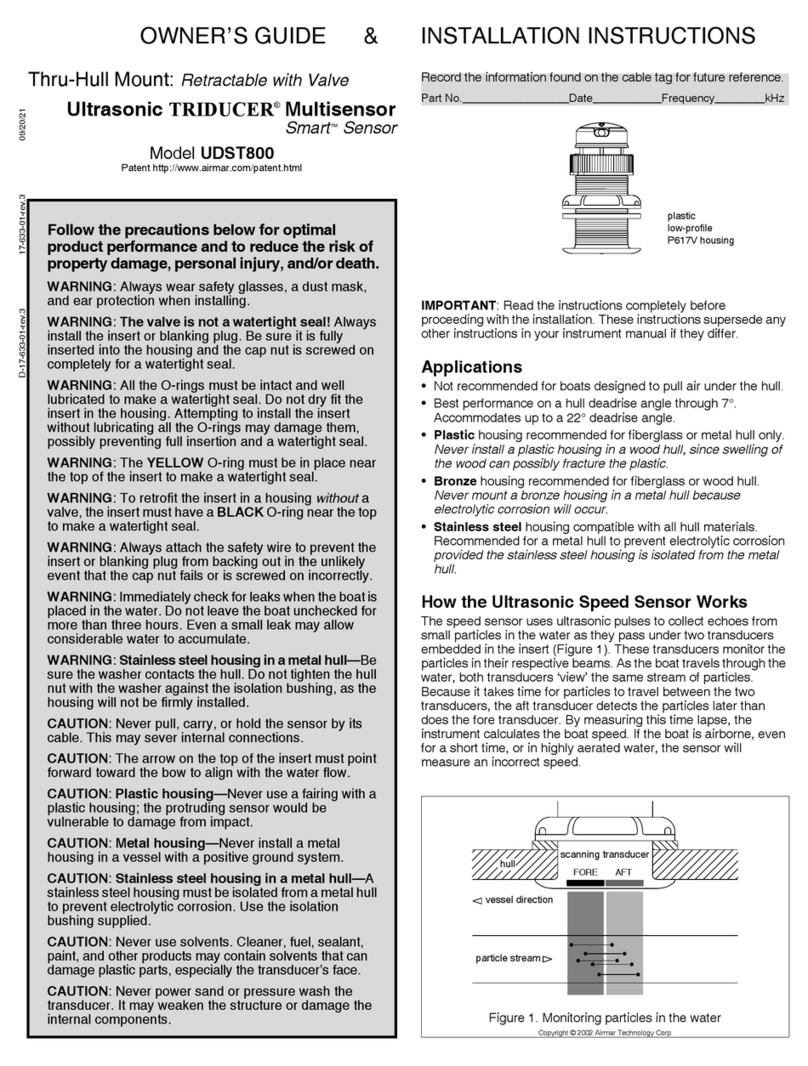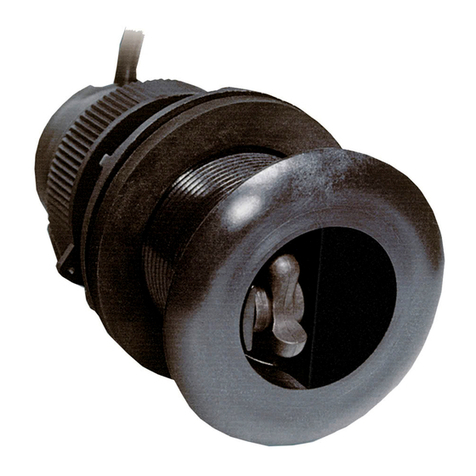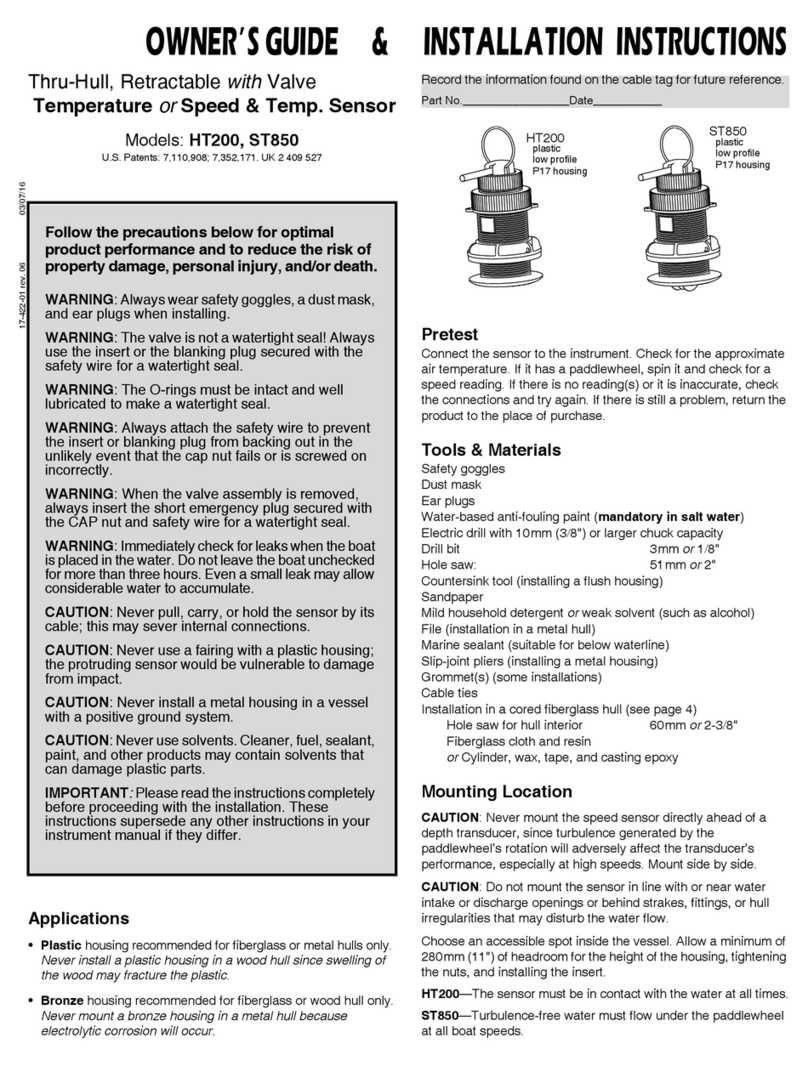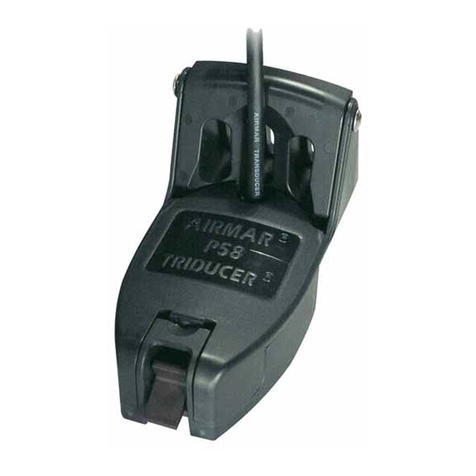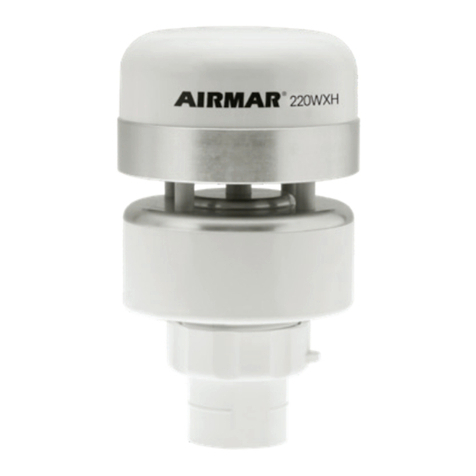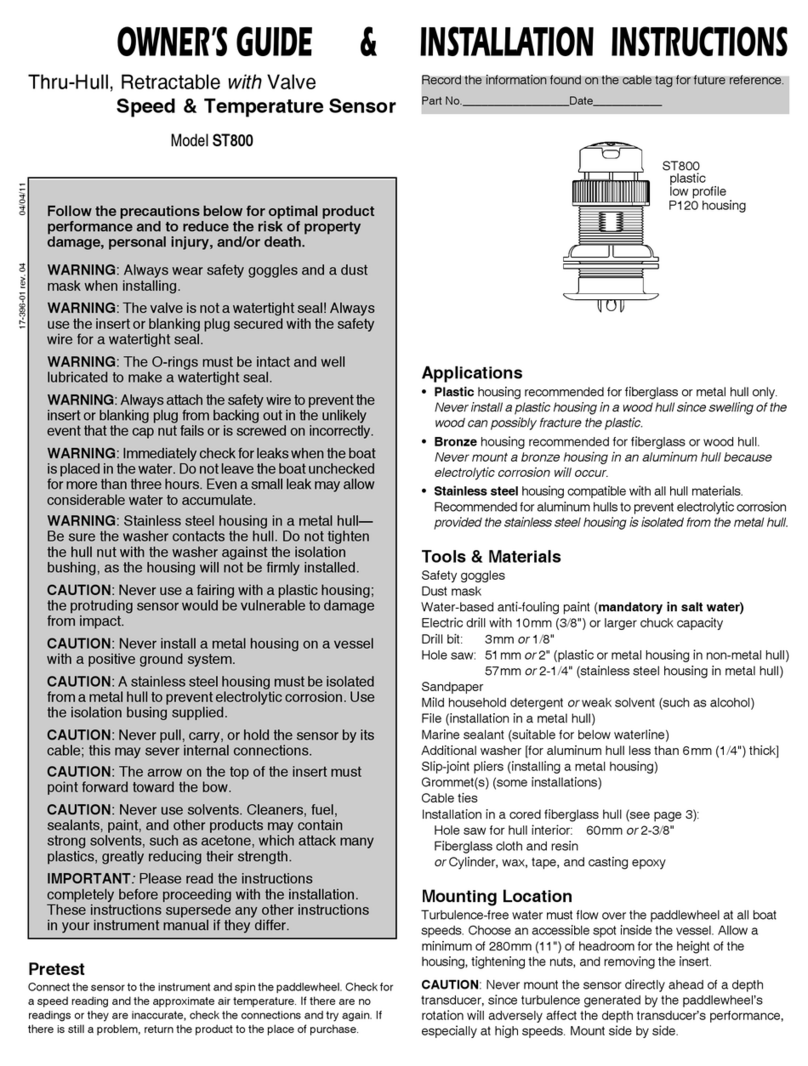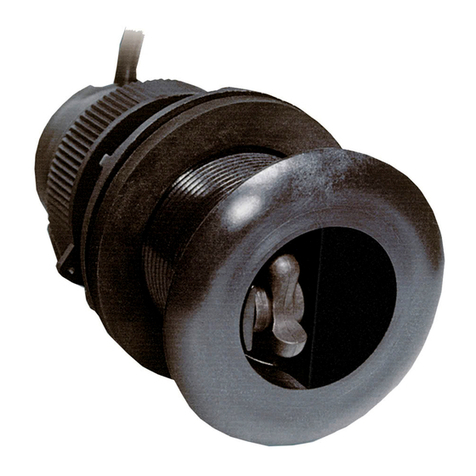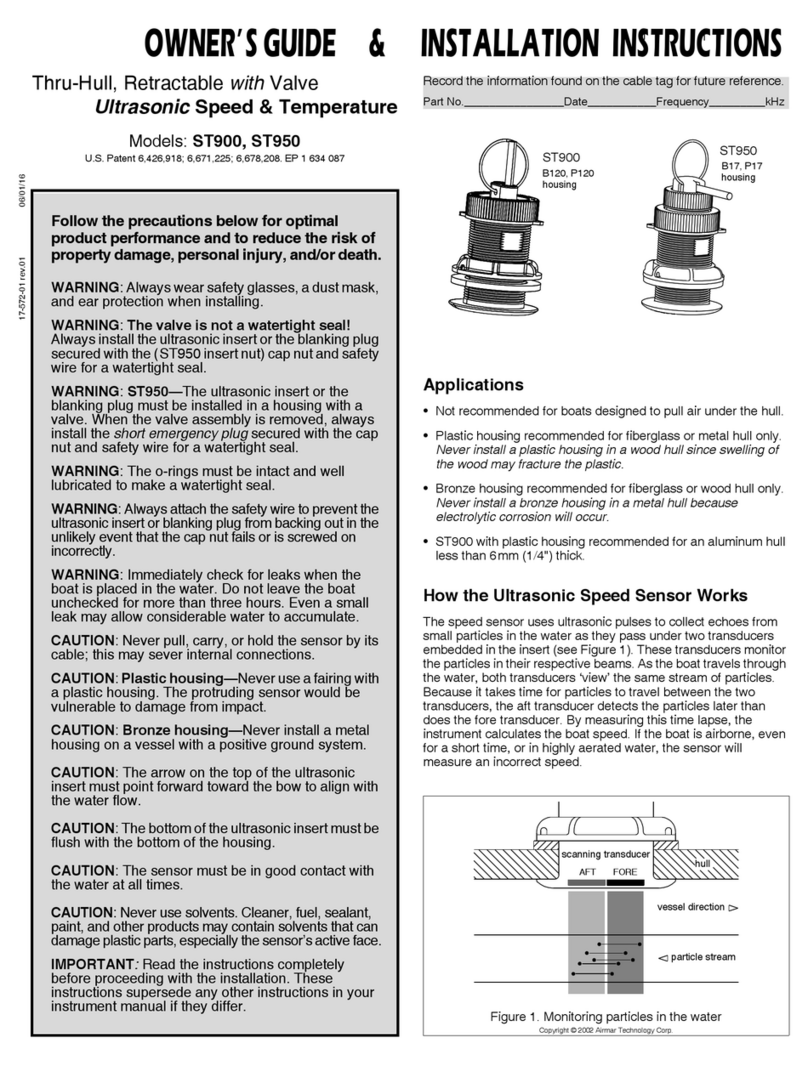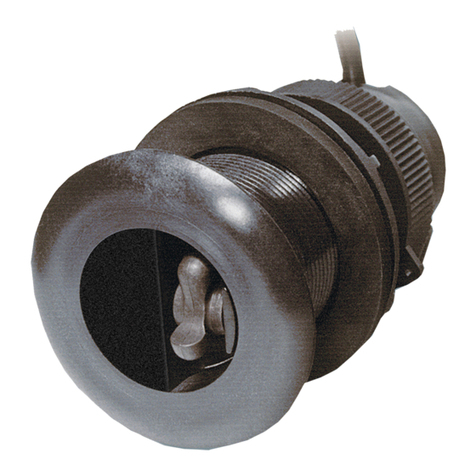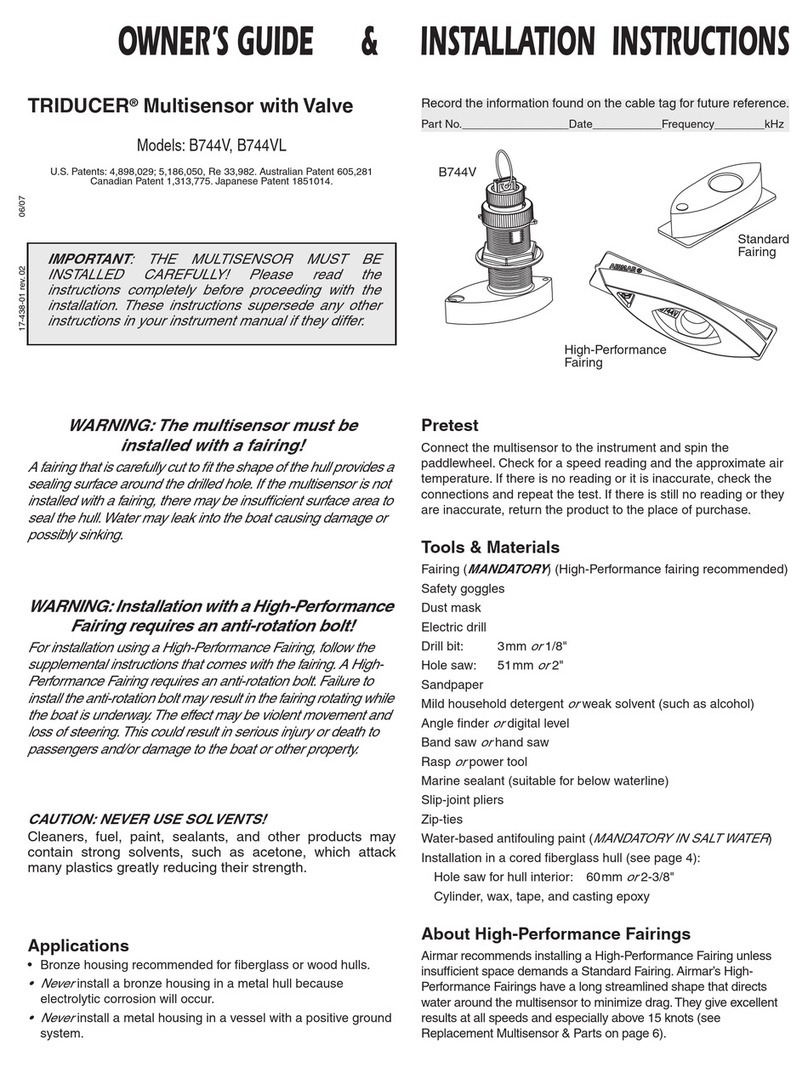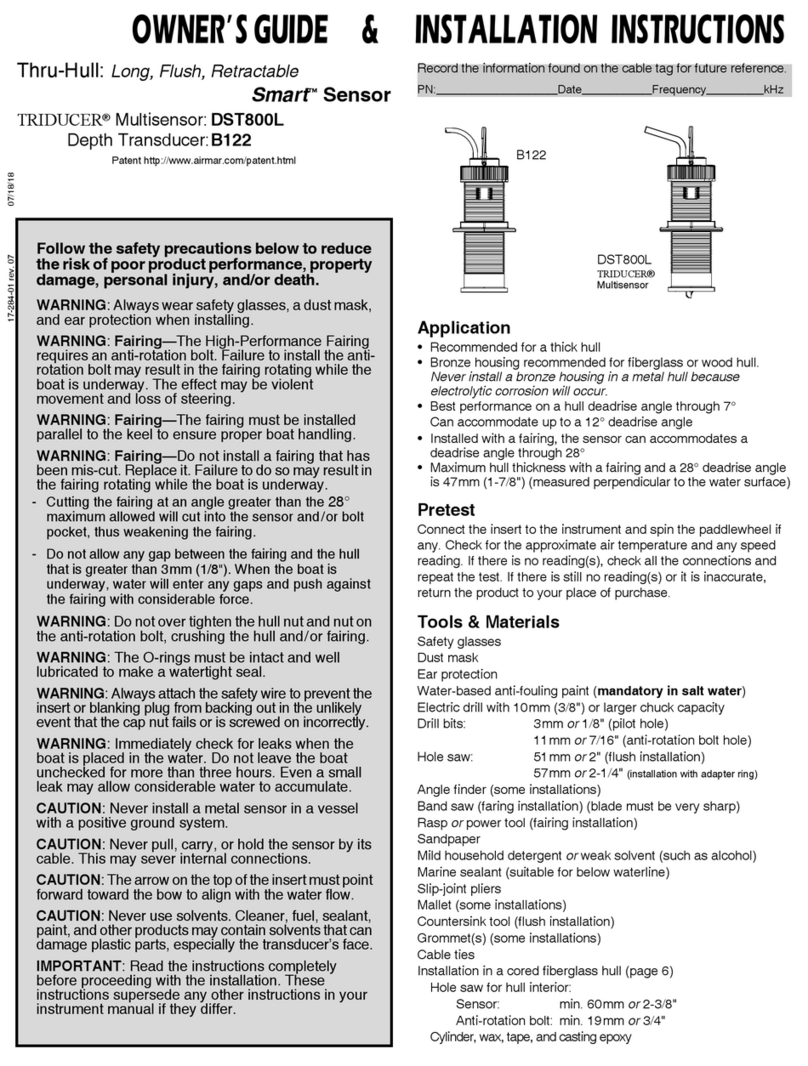
4
7. Always attach the safety wire to prevent the insert from backing
out in the unlikely event that the cap nut fails or is screwed on
incorrectly.
Plastic housing—Attach the safety wire to one eye in the hull
nut. Keeping the wire taut throughout, lead the wire in a
counterclockwise direction and thread it through one eye in the
cap nut. Thread the wire through the eye a second time. Then
lead the wire through the eye in the insert. Twist the wire
securely to itself.
Metal housing—Wrap one end of the safety wire tightly around
the housing and twist it together with the long end. Keeping the
wire taut throughout, lead the wire straight up and through one
eye in the cap nut. Thread the wire through the eye a second
time. Then lead the wire counterclockwise and through the eye
in the insert. Twist the wire securely to itself.
Installing in Housing WITHOUT Valve
To create a watertight seal in a housing that does NOT have a valve,
the insert must have a BLACK O-ring near the top. Use Replacement
O-ring Kit 20-519-01 and follow the instructions supplied.
Cable Routing & Connecting
Follow the instructions supplied with the Ultrasonic Processor.
Checking for Leaks
When the boat is placed in the water, immediately check around
the multisensor for leaks. Note that very small leaks may not be
readily observed. Do not to leave the boat in the water for more
than 3 hours before checking it again. If there is a small leak,
there may be considerable bilge water accumulation after 24
hours. If a leak is observed, repeat “Bedding” and “Installing”
immediately (see page 3).
Installation in a Cored Fiberglass Hull
The core (wood or foam) must be cut and sealed carefully. The
core must be protected from water seepage, and the hull must be
reinforced to prevent it from crushing under the hull nut allowing
the housing to become loose.
CAUTION: Completely seal the hull to prevent water seepage into
the core.
1. Drill a 3mm or 1/8" pilot hole from inside the hull. If there is a rib,
strut, or other hull irregularity near the selected mounting
location, drill from the outside. (If the hole is drilled in the wrong
location, drill a second hole in a better location. Apply masking
tape to the outside of the hull over the incorrect hole and fill it
with epoxy.)
2. Using a 51mm or 2" hole saw, cut the hole from outside the hull
through the outer skin only (Figure 4).
3. From inside the hull, use a 60mm or 2-3/8" hole saw to cut
through the inner skin and most of the core. The core material
can be very soft. Apply only light pressure to the hole saw after
cutting through the inner skin to avoid accidentally cutting the
outer skin.
4. Remove the plug of core material so the inside of the outer skin
and the inner core of the hull are fully exposed. Sand and clean
the inner skin, core, and the outer skin around the hole.
5. If you are skilled with fiberglass, saturate a layer of fiberglass
cloth with a suitable resin and lay it inside the hole to seal and
strengthen the core. Add layers until the hole is the correct
diameter.
Alternatively, a hollow or solid cylinder of the correct diameter
can be coated with wax and taped in place. Fill the gap between
the cylinder and hull with casting epoxy. After the epoxy has set,
remove the cylinder.
6. Sand and clean the area around the hole, inside and outside, to
ensure that the marine sealant will adhere properly to the hull. If
there is any petroleum residue inside the hull, remove it with
either mild household detergent or a weak solvent (alcohol)
before sanding.
7. Proceed with “Bedding” (see page 3).
Operation, Maintenance, & Parts
How the Valve Works
THE VALVE IS NOT A WATERTIGHT SEAL! The multisensor
incorporates a self-closing valve which minimizes the flow of
water into the boat when the insert is removed. The curved flap
valve is activated by both a spring and water pressure. Water
pushes the flap valve upward to block the opening, so there is no
gush of water into the boat. Always install the insert or the
blanking plug secured with the cap nut and safety wire for a
watertight seal.
Using the Blanking Plug
To protect the insert, use the blanking plug:
• When the boat will be kept in salt water for more than a week.
• When the boat will be removed from the water.
• When aquatic growth buildup on the paddlewheel is suspected
due to inaccurate readings from the instrument.
1. The O-rings must be intact and well lubricated to make a
watertight seal. On the blanking plug, inspect the O-rings
(replace if necessary) and lubricate them with the silicone
lubricant supplied or petroleum jelly (Vaseline®) (Figure 5).
2. Remove the insert from the housing by removing the safety wire
and unscrewing the cap nut (Figure 3). This will jack up the
insert. Remove the insert with a slow pulling motion. Replace it
by sliding the blanking plug into the housing.
NOTE: In the very unlikely event that the valve breaks, replace
the housing the next time the boat is hauled.
3. With the blanking plug fully inserted, screw the cap nut several
turns until the threads are engaged. Continue to tighten the cap
nut completely. Hand tighten only. Do not over tighten.
NOTE: The blanking plug must be fully inserted in the housing
and the cap nut screwed on completely for a watertight seal.
4. Reattach the safety wire to prevent the blanking plug from
backing out in the unlikely event that the cap nut fails or is
screwed on incorrectly.
Figure 5. Replacing the O-rings
arrow
blanking
insert
yellow
O-ring
small
O-rings (2)
Copyright © 2017 Airmar Technology Corp
BOW ►
plug
active face
